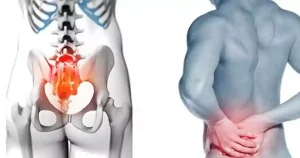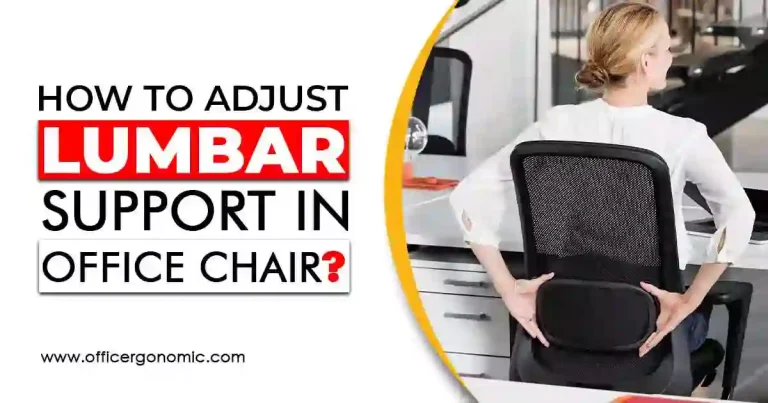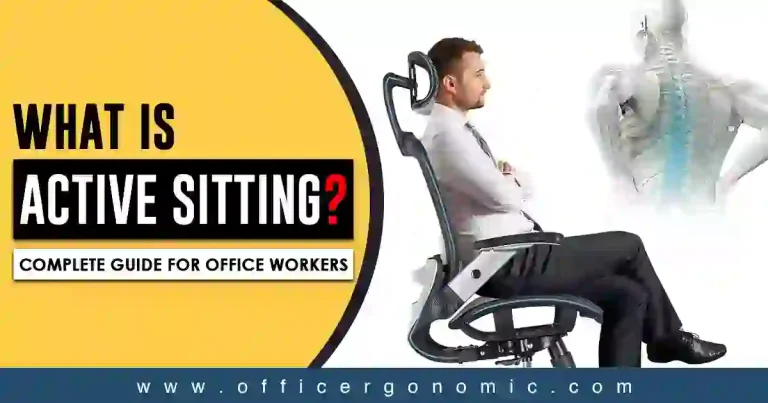How to Sit with SI Joint Pain?
Our lower back contains two SI joints, one on each side of the spine. An SI joint connects the sacrum (the base of the spine) to the ilium (the top of the pelvis) via strong ligaments. When the SI joints become inflamed, the resultant pain is called “Sacroiliac or SI joint pain”.
This inflammation is most often the cause of pain in the lower back and upper legs. The sacroiliac joints, also known as the SI joints, are essential for movements involving the spine and legs working together, such as walking, standing up from a lying-down posture, and sitting down.
These tasks become challenging for people with SI joint discomfort, and prolonged periods of inactivity, such as sleeping or sitting, can exacerbate their pain. In this article we covered every detail you need to know about SI joint pain, what is SI joint pain, its causes, and how to sit with SI joint pain. Keep reading!
Causes of SI Joint Pain
Some of the causes of SI joint pain are:

Arthritis and osteoarthritis:
Inflammation caused by arthritis can affect the SI joint as well as the vertebrae in the spine, resulting in lower back and hip discomfort and stiffness. The cartilage of the SI joint may also be impacted by osteoarthritis, which develops when the cartilage that cushions the ends of bones gradually deteriorates and causes discomfort.
Pregnancy:
In pregnancy, some hormones are released in females to loosen joints and ligaments in preparation for childbirth. These hormones alter the SI joints’ range of motion and decrease their stability. Additionally, extra weight causes more strain and wear on the SI joints.
An abnormal walk pattern:
An abnormal walk pattern can produce pain in the SI joint if one leg is shorter than the other or if more pressure is put on one leg while walking.
Certain hard activities:
Activities that are hard on the lower back and pelvis and put weight unevenly on one leg such as stair climbing, gardening, snow shoveling, running, etc. can induce SI joint pain.
Infection:
In rare cases, bacterial infection by Staphylococcus aureus can cause sacroiliitis if the infection attacks the sacroiliac joints.
Trauma:
The SI joint can be injured by a quick impact, like in a car accident. In rear-end car collisions, sacroiliac joint dysfunction (which is one type of spinal injury) can happen and lead to severe lower back and buttock pain.
How to Sit with SI Joint Pain?
When it comes to dealing with SI joint pain, it is crucial to prioritize comfort and minimize any stress on your joints. Here are some helpful tips on how to sit when experiencing SI pain:
Opt for the Right Chair:
Make sure to choose a chair that offers support to your back, elongates the spine, lifts the chest upwards, positions the hip level with the knees, and evenly distributes weight between both sides of the body. A chair with cushioning can help alleviate pressure on the SI joints.
If pregnancy is the main cause of SI joint pain, then you should make sure that you are using comfortable office chairs that are specifically designed for use during pregnancy. You can check out a few chairs shortlisted by our team after conducting thorough market research:
Maintain a Balanced Posture:
Start practicing active sitting at your workplace. While sitting on a chair, try keeping your back straight and feet flat on the floor. Aim to keep your knees at a 90-degree angle as this helps distribute the body weight evenly and reduces strain on the joints.
Change Positions Regularly:
While experiencing SI joint pain, try to avoid staying in one position for long periods. Rock your pelvis gently forward, backward, and side to side with your feet flat on the floor. Try mild clockwise and anticlockwise rotations of the pelvic axis.
You can feel better by introducing these micro-movements because the nerve endings in the sacroiliac joints become activated by this dynamic sitting style. Make an effort to shift your weight, stretch, or even stand up and take walks occasionally to prevent stiffness and improve blood circulation.
Utilize Cushions or Pillows:
If you experience pain in the hips or lower back consider using cushions or pillows to provide support and relieve pressure in those areas.
Use Taylor’s position while sitting on the floor:
Sitting on the floor or even in bed with SI joint pain can be very difficult. In such a situation, sitting in a Taylor position may help open up hips and provide some relief from SI joint pain.
Try to place the sit bones firmly on the floor, and cross the legs in such a way that each of your feet is underneath your thighs. A cushion under the hip bone can be useful. Try to lengthen the spine and open the chest.
Avoid leaning on one side:
People with SI joint pain must avoid sitting with a wallet or phone in one of the back pants pockets or crossing one leg over the other. Both of these positions may place uneven pressure on the SI joints and cause discomfort.
Open the angle of the hip bone:
Sitting causes the hips to take on a more “closed” and shortened position, which increases the chances of tightening of hip flexor muscles. The hip angle “opens” when your knees are lower than your hips, resulting in extra length in your hip flexors. You can also consider widening the position of your knees horizontally to open your hips for a more external rotation.
Use Ottoman or footrest:
As footrests prevent your feet from dangling, you don’t experience much strain on your SI joints. You are able to sit in a relaxing position and you can easily switch positions using the footrests.
Chair Exercises for SI Joint Pain
The following chair exercises can help relieve SI joint pain:
Twisting the spine while sitting straight:

Put your hands on opposing shoulders as you cross your arms in front of your body. For 5 seconds, rotate your upper body as far to the left as possible. Reverse the twist on the right side after releasing your body from the posture.
On each side, repeat this stretch five times. By improving your spinal mobility this way, you can lessen the negative consequences of SI joint dysfunction.
Placing a ball between the inner thighs:
Sit on a chair and place a ball or pillow between the knees. Squeeze the legs together to stimulate the inner thigh muscles and pelvic girdle.
Doing cat-cow exercise:
Place both hands on your thighs as you sit at the edge of the chair. Inhale and lift your chest and chin to perform the “cow” motion. Arch the spine backward and gaze upwards. As you exhale, curve your spine, tuck your chin into your chest, and pull your belly button in to create the “cat” action. Complete 2-3 rounds in one sitting.

Pulling knee to chest:
While sitting at the edge of the chair, press the right foot firmly on the floor. With the left hand, draw the knee towards the chest. Hold for up to 1 minute. Repeat on the opposite side.

Figure four exercise:
Put the right foot firmly on the ground while sitting at the edge of the chair. Place the outside ankle of the left foot up and over the right knee to make a “4”. Lean forward slightly. Maintain a straight spine. Hold for as long as a minute. On the other side, repeat.
Hamstring stretch:
With both heels flat on the floor and your toes pointed upward, sit at the edge of your chair. Keep one leg bent while straightening the other until your heel reaches the floor. Try to touch the toes of your straightened leg by stooping forward and maintain this posture for up to 30 seconds. It is okay to stop if you feel pain while stretching.
Bottom Line!
Long hours of sitting can be painful for anyone, but knowing the proper method to sit and taking some precautionary measures can lessen your suffering if you have SI joint pain.
Sitting appropriately, taking frequent breaks while sitting, stretching, and selecting an appropriate ergonomic chair are all ways to prevent and reduce pain in the SI joints. Regular exercise greatly minimizes the likelihood of getting SI joint pain.







